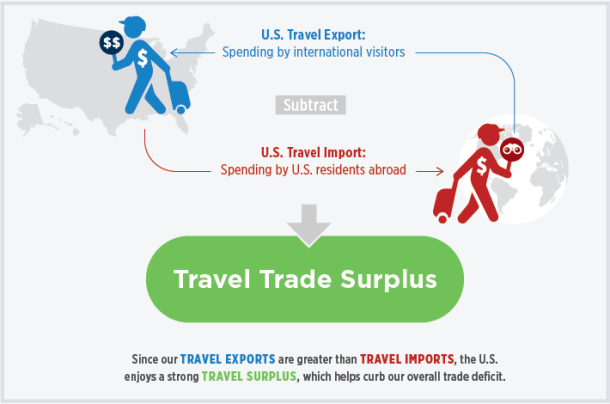New data released by the U.S. Department of Commerce reveals the country’s travel trade surplus slipped to just $4 billion in 2022—down from an all-time high of $85.9 billion less than a decade ago, underscoring the urgent need to rebuild inbound travel and regain its associated economic benefits.
“Travel has historically generated an annual trade surplus that meaningfully reduced the U.S. trade deficit,” said U.S. Travel Association President and CEO Geoff Freeman. “The latest trade data is a wake-up call for immediate federal action to boost this essential industry and increase travel exports to benefit the entire U.S. economy.”
The overall U.S. trade deficit in 2015—when travel generated its largest trade surplus ever—would have been 18% higher without the offset produced by the travel trade balance.

FEDERAL POLICIES TO BOOST INBOUND TRAVEL
Federal investment and resources are necessary to reclaiming the travel trade surplus and meeting the Biden’s administration’s goal of attracting 90 million international visitors and $279 billion in spending annually by 2027.
Namely, U.S. Travel Association has called on the Biden administration to take further action to lower visitor visa (B1/B2) interview wait times, which currently exceed an average of 400 days for first-time applicants in the top 10 visa-requiring inbound markets.
Other policies, such as ending the vaccine requirement for international visitors to the United States and addressing air travel system inefficiencies in the upcoming Federal Aviation Administration reauthorization, can help create a more seamless travel experience to boost visitation.
“It’s no coincidence that the industry’s highest trade surplus occurred at a time when the federal government was making a concerted effort to increase inbound travel,” added Freeman. “Facilitating more inbound travel—and effectively lowering the overall trade deficit—should be a top economic priority for the Biden administration.”

